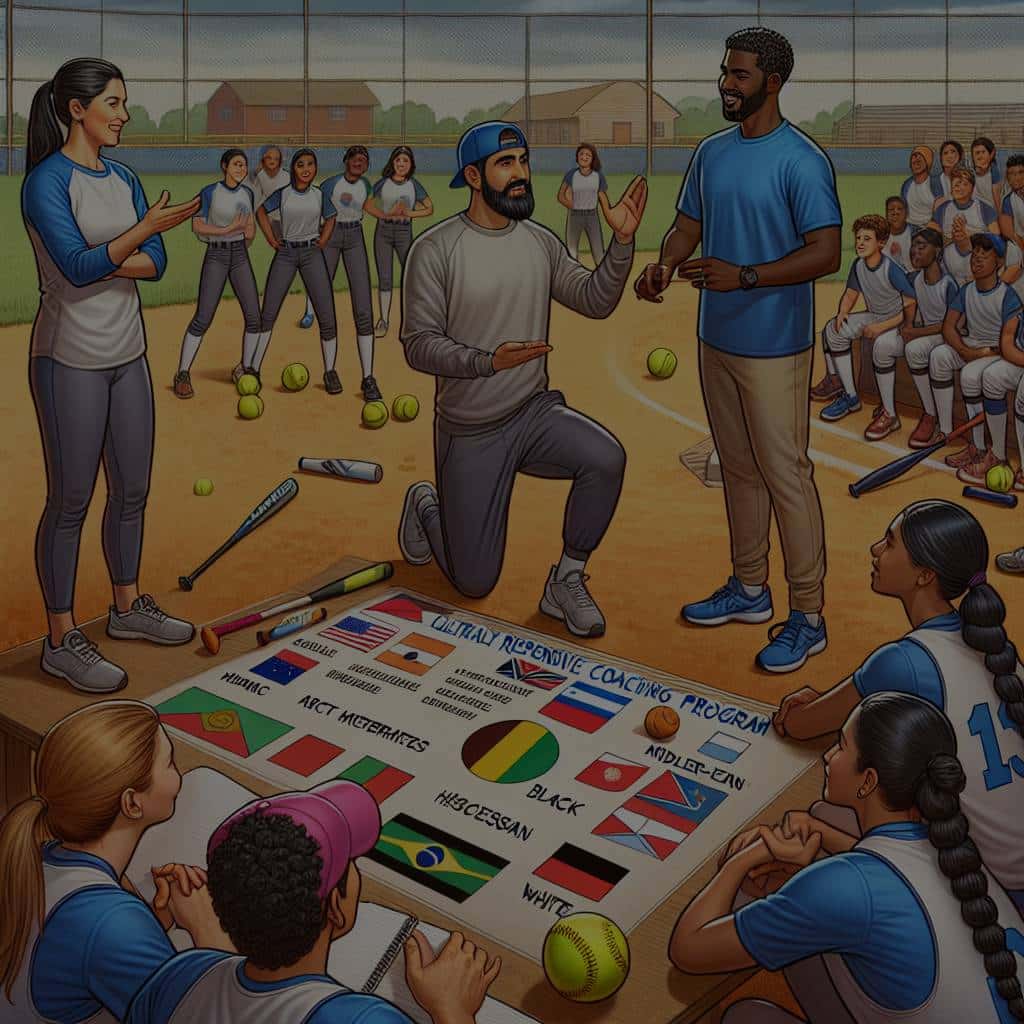How to Create a Culturally Responsive Coaching Program for Diverse Athletic Teams?

In the realm of sports, coaches and athletes represent an array of cultural backgrounds. This diversity brings richness to the sports industry, yet it also poses unique challenges. A culturally responsive coaching program is essential for harnessing the strengths of a diverse team while ensuring that all athletes feel valued and included. The following sections will guide you on how to create such a program.
Understanding Cultural Diversity in Sports
Before diving into the creation of a culturally responsive coaching program, it’s crucial to fully comprehend what cultural diversity in sports entails. Cultural diversity in sports reflects the diverse racial, ethnic, and cultural backgrounds of athletes and coaches. This diversity is not limited to racial and ethnic lines but also includes other factors such as gender, socio-economic status, geographical origin, and physical abilities.
Also read : What’s the Role of Dynamic Neuromuscular Stabilization in Preventing ACL Injuries in Soccer Players?
Sports are a microcosm of society, and as such, they mirror the broader societal dynamics. The growing diversity in sports is a reflection of the changing demographics in society. Today, we see more women, people of color, immigrants, and athletes with disabilities participating in sports at all levels, from grassroots to professional leagues. Consequently, a culturally responsive coaching program is not a luxury but a necessity in today’s sports environment.
The Importance of Leadership in a Culturally Responsive Coaching Program
Leadership is a critical element in the success of any coaching program, and it becomes even more crucial when you are dealing with a diverse team. Coaches, as leaders, have the responsibility to foster an environment where every athlete feels valued and included, regardless of their cultural background.
Also read : What Are the Best Approaches to Mental Toughness Training for Competitive Climbers?
Coaches should demonstrate cultural competency, which means they must possess the knowledge, skills, and attitudes necessary to work effectively with people from different cultures. This includes understanding cultural nuances, demonstrating empathy, and treating each athlete as a unique individual.
Creating an inclusive environment also means being aware of and addressing any biases or stereotypes that might exist within the team. Coaches have to be proactive in addressing these issues, and they must be willing to have difficult conversations when necessary.
Integrating Cultural Diversity in Sports Education
Inclusivity in sports begins with education. Coaches, athletes, and students involved in the sport must have a thorough understanding of the importance of cultural diversity. This education should start at a young age and continue throughout an athlete’s career.
Sports education programs in colleges and schools can integrate cultural diversity into their curriculum by teaching students about different cultures, their unique sports traditions, and the contributions of various cultural groups to the world of sports. This can help students appreciate the value of diversity and foster a sense of respect and understanding for different cultures.
Additionally, sports education should also focus on teaching students about the importance of teamwork and cooperation. These are essential skills not just on the sports field, but also in life, and they can go a long way in promoting cultural understanding and harmony.
Encouraging Performance and Inclusion in a Diverse Team
A diverse team can bring together a range of talents, perspectives, and experiences that can enhance performance. However, to tap into this potential, coaches need to ensure that all athletes feel included and valued.
This can be achieved by adopting a culture of respect within the team, where every athlete’s contribution is recognized and appreciated. Coaches can also encourage athletes to learn from each other and share their unique experiences and perspectives, thereby promoting mutual understanding and respect.
Additionally, coaches must ensure that they don’t perpetuate stereotypes or biases in their coaching practices. For instance, they should not make assumptions about an athlete’s abilities or performance based on their cultural background.
Promoting gender and racial equality is another important aspect of ensuring inclusion in a diverse team. Women, athletes of color, and athletes with disabilities should be given equal opportunities to participate and perform in sports.
Implementing Physical and Cultural Adaptations
Physical and cultural adaptations are another key aspect of a culturally responsive coaching program. These adaptations could involve modifying training routines to accommodate athletes with different physical abilities, or adjusting communication styles to respect cultural norms.
For instance, some cultures may have specific dietary restrictions, which would need to be taken into account when planning meals for the team. Similarly, some cultures might have unique customs or traditions related to sports, which should be acknowledged and respected.
Physical adaptations might involve modifying equipment or training routines to cater to athletes with disabilities. Doing so will not only ensure their safety but also enable them to participate fully in the sport.
In conclusion, creating a culturally responsive coaching program is a complex but rewarding endeavor. It involves not only understanding cultural differences but also actively promoting inclusion and respect for all athletes. The result is a team that not only performs well but also values and respects each other’s unique contributions.
The Role of Policy and Practice in Culturally Responsive Coaching
The formulation of policies and practices that promote inclusion is a fundamental building block in creating a culturally responsive coaching program. It is not enough to have good intentions or passive non-discrimination policies; athletic departments must be proactive in promoting diversity and ensuring the inclusion of all athletes, regardless of their cultural backgrounds.
These policies should extend beyond the recruitment of diverse athletes and also encompass hiring practices that encourage diversity among coaches and leadership positions within sports organizations. This could involve actively seeking out women, African American, and other minority coaches, as well as ensuring equal opportunities for people with disabilities.
The policies should also foster a culture of respect and inclusivity within the team. This can be achieved by establishing clear guidelines on acceptable behavior, and taking swift action against any kind of discrimination or bias. Coaches must lead by example, demonstrating through their actions that they value and respect all athletes.
Practices, on the other hand, pertain to the everyday actions and decisions that bring these policies to life. This could involve making sure that every athlete gets equal playing time, or making conscious efforts to accommodate the cultural needs of athletes, such as dietary requirements or religious practices.
Participation of Athletes with Disabilities in Mainstream Sports
In keeping with the spirit of inclusion, a culturally responsive coaching program must not forget about athletes with disabilities. Historically, athletes with disabilities have been largely excluded from mainstream sports in the United States and relegated to separate, special programs. However, in recent years, there has been a strong push towards integrating athletes with disabilities into regular sports programs, in a discipline often referred to as unified sports.
Unified sports, as championed by organizations such as the Special Olympics, involve teams consisting of both athletes with and without disabilities competing together. This approach not only provides opportunities for athletes with disabilities to participate in mainstream sports, but also fosters a greater understanding and acceptance of disabilities amongst the general population.
In order to facilitate the participation of athletes with disabilities in mainstream sports, coaches may need to make certain adaptations to their training programs. This could include modifying training routines or equipment to cater to the physical abilities of athletes with disabilities. However, coaches should not let these adaptations become a barrier to full participation – the goal should always be to empower athletes with disabilities to participate to the best of their abilities.
Conclusion
In conclusion, creating a culturally responsive coaching program for diverse athletic teams involves a multifaceted approach. It necessitates an understanding of cultural diversity, competent leadership, integration of diversity in sports education, encouraging performance and inclusion, physical and cultural adaptations, and importantly, proactive policies and practices.
Moreover, it requires us to challenge our own biases, to step out of our comfort zones, and to truly engage with the diverse cultures and experiences represented in our teams. By doing so, we can create a sports environment that not only respects and values diversity but also harnesses it as a strength. The ultimate goal is to foster a team that is not only successful in their physical activity but also in demonstrating the value of cultural diversity and unity in sports.
